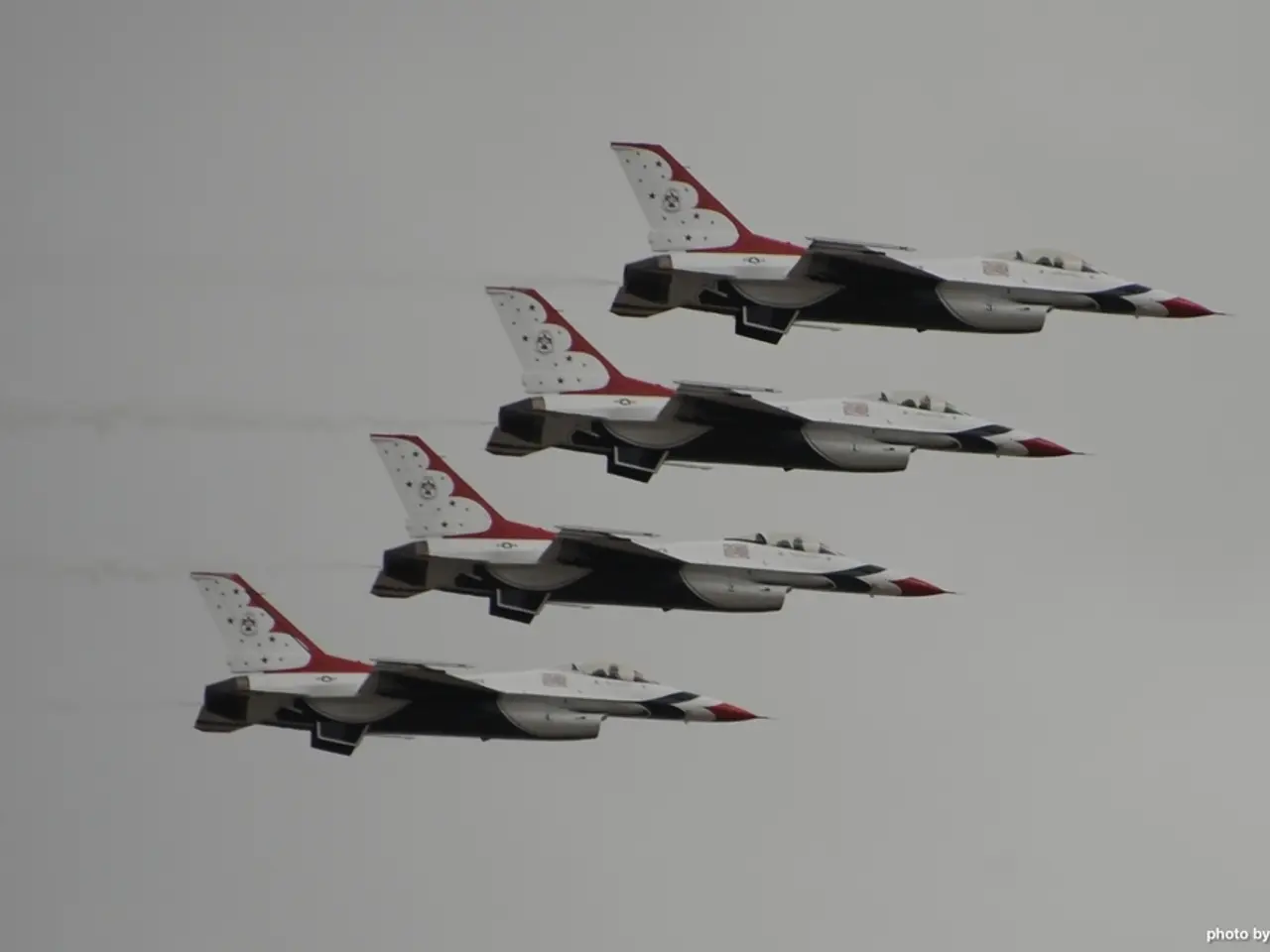Strike on Russian Military Base: Ukraine Claims Destruction of Fighter Jets and Glide Bombs
In a series of bold moves, Ukraine has successfully targeted multiple Russian air bases in recent weeks, marking a significant shift in the ongoing conflict.
On June 6, 2025, Ukrainian forces launched a preemptive strike on several Russian airfields and military facilities, including the Engels and Dyagilevo airfields. These bases are key hubs for Russia's long-range bombers, such as the Tu-95, Tu-22M3, and Tu-160, frequently used against Ukraine. The attack ignited large fires and caused significant damage, including hitting at least three fuel tanks at Engels-2 air base, over 600 kilometres from the front line. The Dyagilevo airfield also sustained fire damage, with recorded explosions and air defense activity.
More recently, on July 5, 2025, Ukraine attacked the Borisoglebsk airbase in Russia, reportedly hitting a storage facility for glide bombs. This assault followed a wave of unprecedented drone strikes by Russia against Ukraine. The Ukrainian military emphasised that these bases store fighter jets used to bomb Ukrainian cities.
The implications of these attacks are far-reaching. They have disrupted Russia’s ability to launch long-range aerial assaults on Ukraine by damaging key bomber hubs and munition storage sites. The strikes have also had a significant psychological and strategic impact, demonstrating Ukraine’s capacity to strike deep into Russian territory, forcing Russia to divert resources to base defense.
However, these actions have not come without consequence. Russia has responded with massive drone and missile assaults on Ukrainian targets, including civilian areas and critical infrastructure such as the Zaporizhzhia Nuclear Power Plant. This escalation has raised international concern over civilian safety and nuclear risks.
International figures, such as UN Secretary-General Antonio Guterres, have called for de-escalation and ceasefires, noting the humanitarian toll and risks of continued escalation.
Last month, Ukraine claimed to have destroyed over 40 Russian planes at several airfields deep in Russia's territory in a surprise drone attack. The Borisoglebsk air base, reportedly the home base of Russia's Su-34, Su-35S, and Su-30SM fighter aircraft, was allegedly hit in this attack.
Russian officials did not immediately comment on the attack at the Borisoglebsk air base. It is alleged that "possibly other aircraft" were also hit at the base. Of the 322 drones and decoys fired by Russia, 157 were shot down, and 135 were likely lost, due to electronic jamming.
The bombing campaign by Russia is described as a stepped-up bombing campaign, involving the use of hundreds of drones. This campaign, part of a war that has been ongoing for more than three years, has dashed hopes for a breakthrough in efforts to end the conflict.
The attack on the Borisoglebsk air base is part of Ukraine's strategy to dent Russia's military capability and demonstrate its ability to hit high-value targets in Russia. Ukraine's military General Staff also reported hitting a training aircraft at the base.
These actions mark a significant phase in the ongoing conflict, with profound military and geopolitical repercussions. The future of the conflict remains uncertain, as both sides continue to respond with military force, raising concerns over the potential for further escalation and the safety of civilians in the region.
In light of these actions, tensions between Ukraine and Russia have escalated, with the military operations spilling over into the realm of politics and general news. The attacks on Russian air bases such as Engels, Dyagilevo, and Borisoglebsk have demonstrated Ukraine's resolve, disrupting Russia's long-range bomber capabilities and forcing a diversion of resources to base defense. However, the retaliatory drone and missile assaults on Ukrainian targets by Russia, including civilian areas, have raised concerns about the safety of civilians and the potential for further escalation in war-and-conflicts.







